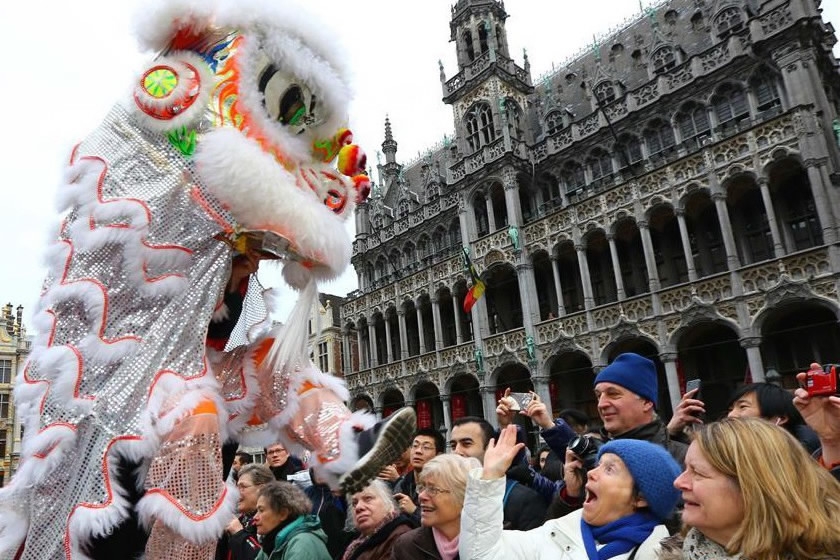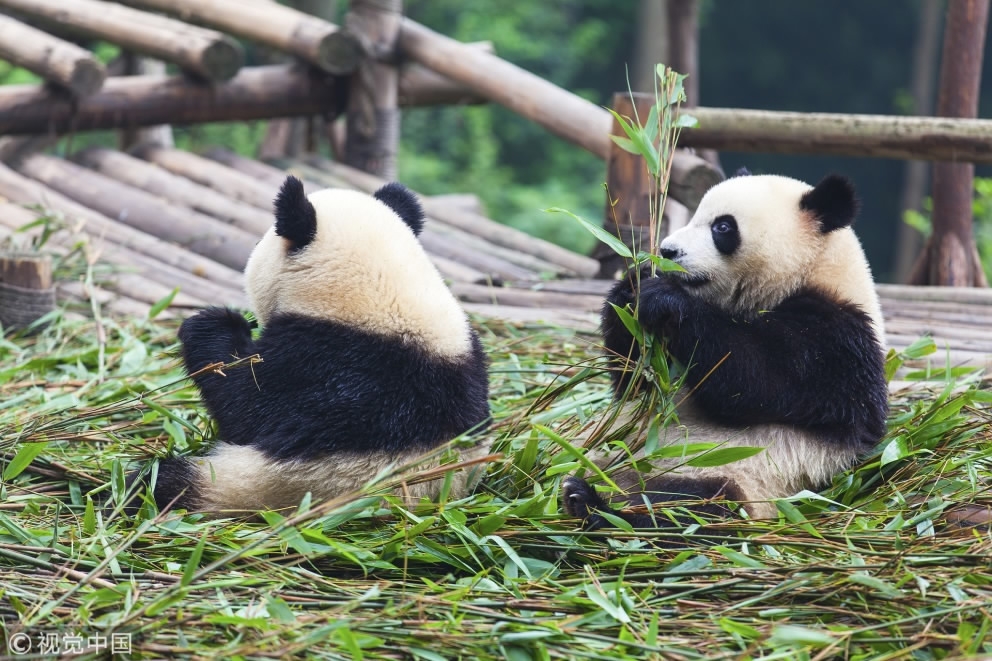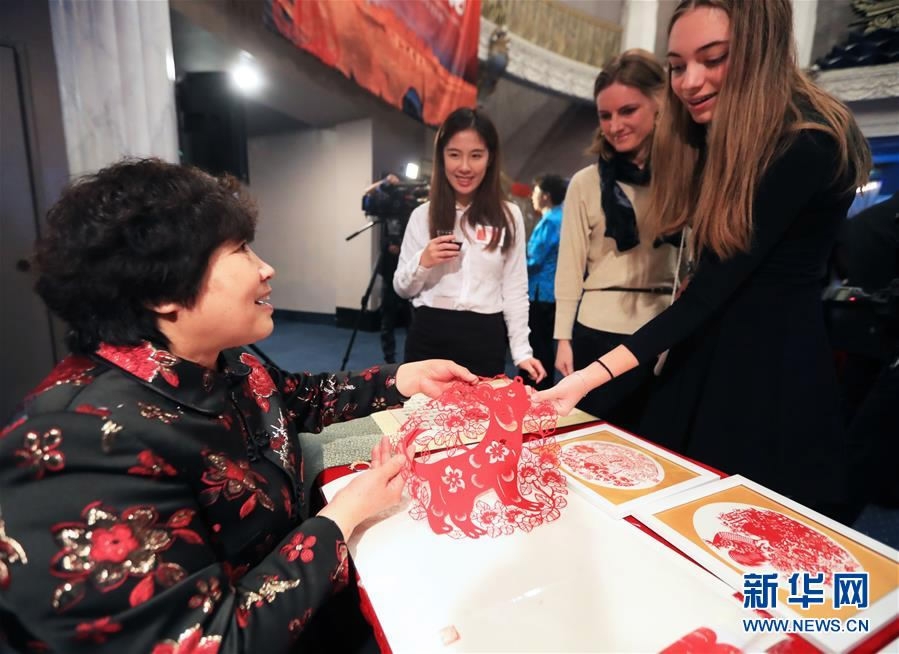
Opinions
08:01, 16-Feb-2018
Opinion: Does Chinese New Year festival look more like a holiday of the global community of shared harmony?
Guest commentary by Jia Wenshan

“Here is what I want you to do
Kill the dragon
Kill the dragon, save the world
Kill the dragon”.
Readers might be familiar with the lyrics of Kierra Sheard’s song titled “Kill the Dragon,” but Chinese people do not traditionally treat dragons as malign beasts that should be conquered like in the West.
In fact, the dragon, known as long (龙) in Mandarin Chinese, is turned into a semi-human or semi-Chinese creature in the Chinese culture and the kingdom of supernatural beings. Chinese people find it unnecessary to kill the dragon as the lyrics suggest. Instead, they find merit in the dragon as an all-capable and all-powerful mythical being that can be turned into a source of luck dispelling evil spirits.
Such a theme runs through the Chinese New Year celebrations with other similar examples. For instance, the lion, traditionally depicted as a ferocious animal in the West, is also turned into a semi-human creature interacting playfully with humans during the Chinese New Year celebrations.
Traditionally, on the last day of the Chinese New Year celebrations which is the 15th day of the first lunar month, in Asian countries such as China, Vietnam, South Korea, Malaysia as well as in Chinese communities overseas, the Dragon dance and/or the Lion dance are staged by either professional teams or amateurs to entertain large crowds of people, sometimes, from different racial and national backgrounds.

A Chinese Lion dance being performed during a Chinese New Year's parade in Brussels, Belgium, January 28, 2017. /VCG Photo
A Chinese Lion dance being performed during a Chinese New Year's parade in Brussels, Belgium, January 28, 2017. /VCG Photo
The Nian (literally “Year” in Chinese) monster is said to be another supernatural creature posing a threat to humans. Therefore, the Chinese people would scare off the monster away by setting off fireworks, sticking red-paper couplets on the doors and walls to frighten the monster.
While the Nian monster is scared away, the dragon and the lion are somehow befriended. Thus harmony with nature is created and familial and communal safety, security and harmony are restored.
As the analysis above illustrates, the Chinese New Year is the most successful Chinese practice of harmony at the societal level idealized by Confucius. This social harmony is made possible by the realization of the Taoist ideal of harmony with nature – in this case, harmony between humans and supernatural creatures.
This explains why a panda is now viewed as a new national symbol of China. Though it is not an indispensable part of the Chinese New Year tradition, to the Chinese, a panda is peace and harmony incarnated or reincarnated out of what used to be ferocious beasts. Perhaps, the panda is so human-like, Chinese-like, or Confucian-Taoist in nature not because it is born like this, but because the Chinese befriended its family of beastly ancestors such as the lion and the dragon!

Pandas eat bamboo shoots. /VCG Photo
Pandas eat bamboo shoots. /VCG Photo
In Taoism, humans and beasts are not that different. Each one of us, for example, based on the Chinese Zodiac system, is innately associated with one of 12 animal species. US President Donald Trump was born in 1946, and thus is associated with the Year of the Dog. He shares his birth year and Chinese zodiac sign with former Presidents George W. Bush and Bill Clinton. The year 2018 is expected to be a year of fortune for President Trump so long as he is sincere and loyal to his friends, and constantly barking. The Chinese onomatopoeia for a dog’s bark is wang…wang…wang (汪,汪,汪), which is homophonous to 旺, 旺,旺,a term that means prosperity! As my grandma would tell me in my childhood years, dogs are connected to human nature (狗通人性).
As is the habit, Chinese New Year celebrations are being conducted in a rich variety of ways such as concerts, tours, lion dances, dragon dances, and even forums and receptions around the world. Major commercial centers around the world continue to create a Chinese holiday atmosphere, adapt to the needs of Chinese tourists, attract active participation from local residents, and provide both Chinese tourists and local people with entertainment and enjoyment of a different kind.
In addition, Chinese communities around the world appear to become even more active and creative in staging concerts to celebrate the Chinese New Year even before it begins. The Chinese-American community in Los Angeles, for example, has already staged some 40 concerts for self-entertainment purposes.

Paper-cutting artist Shi Junfeng shows her work at the "Happy Chinese New Year" event at Los Angeles, US, February 10, 2018. /Xinhua Photo
Paper-cutting artist Shi Junfeng shows her work at the "Happy Chinese New Year" event at Los Angeles, US, February 10, 2018. /Xinhua Photo
What is worth mentioning is that some Chinese-American non-profit, non-partisan organizations are beginning to celebrate the Chinese New Year in partnership with other all-American counterparts! For instance, the Chinese Intercultural Association based in Irvine, California, recently hosted a Chinese New Year party in a Persian restaurant in partnership with an all-American non-profit, non-partisan organization called the Orange County Toastmaster Club, part of Toastmaster International. Represented and performed by people of almost all racial backgrounds, the party/concert contributed to a mutual understanding between Chinese and American cultures. In another Chinese New Year celebration that was open to people of all races in Pasadena, California, which I attended , two Americans played the guitar and sang Theresa Teng’s song “Sweet, So Sweet!” in fluent Chinese! Both Pacific Symphony, based in Orange County, and the Beverly Hills Conference and Visitors Bureau have also hosted a Chinese New Year event attended by people of all racial backgrounds just during the past weekend.
It appears to me that the Chinese New Year celebrations overseas, traditionally events confined within Chinatowns to entertain the Chinese communities, are becoming more and more like an all-American entertainment attended by everyone.
In consideration of the fact that all other parts of the world are just like Los Angeles, I dare say that the Chinese New Year festival is becoming a new global festival, not only celebrated by the people of Chinese or Asian origins, but also by more and more people of various racial and national backgrounds.
I would like to end this commentary by a new version of “Kill the Dragon”:
“Here is what I want you to do
Befriend the dragon
Befriend the dragon, save the world
Have fun with the dragon (the lion, the dog…)!”
(The author is a professor at the School of Communication at Chapman University, and a research fellow at the National Academy for Development & Strategy at Renmin University of China. The article reflects the author's opinion, and not necessarily the views of CGTN.)

SITEMAP
Copyright © 2018 CGTN. Beijing ICP prepared NO.16065310-3
Copyright © 2018 CGTN. Beijing ICP prepared NO.16065310-3